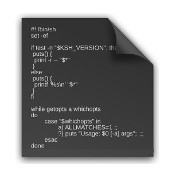Sed is a command line tool that can really do amazing stream manipulations: despite it certainly being a "seasoned" tool, it is very likely that there are a lot of sed one-liners inside your Company's scripts.
Having at least an understanding of it is a must if you want to be able to maintain this legacy stuff that very often is not worth the effort to rework.
And anyway, when having to deal with quick and dirty solutions that rely on shell scripts, or when writing documentation with shell commands that can be easily replaced by a copy and paste by the reader... it's still an excellent tool honestly I cannot work without.
The aim of this post is to provide an easy tutorial to quickly learn how to use sed in every situation that can be easily sorted out with a sed one-liner.
In memory of Lee E. McMahon, contributor to early versions of the Unix operating system, ... and of course in particular of the sed stream editor.
